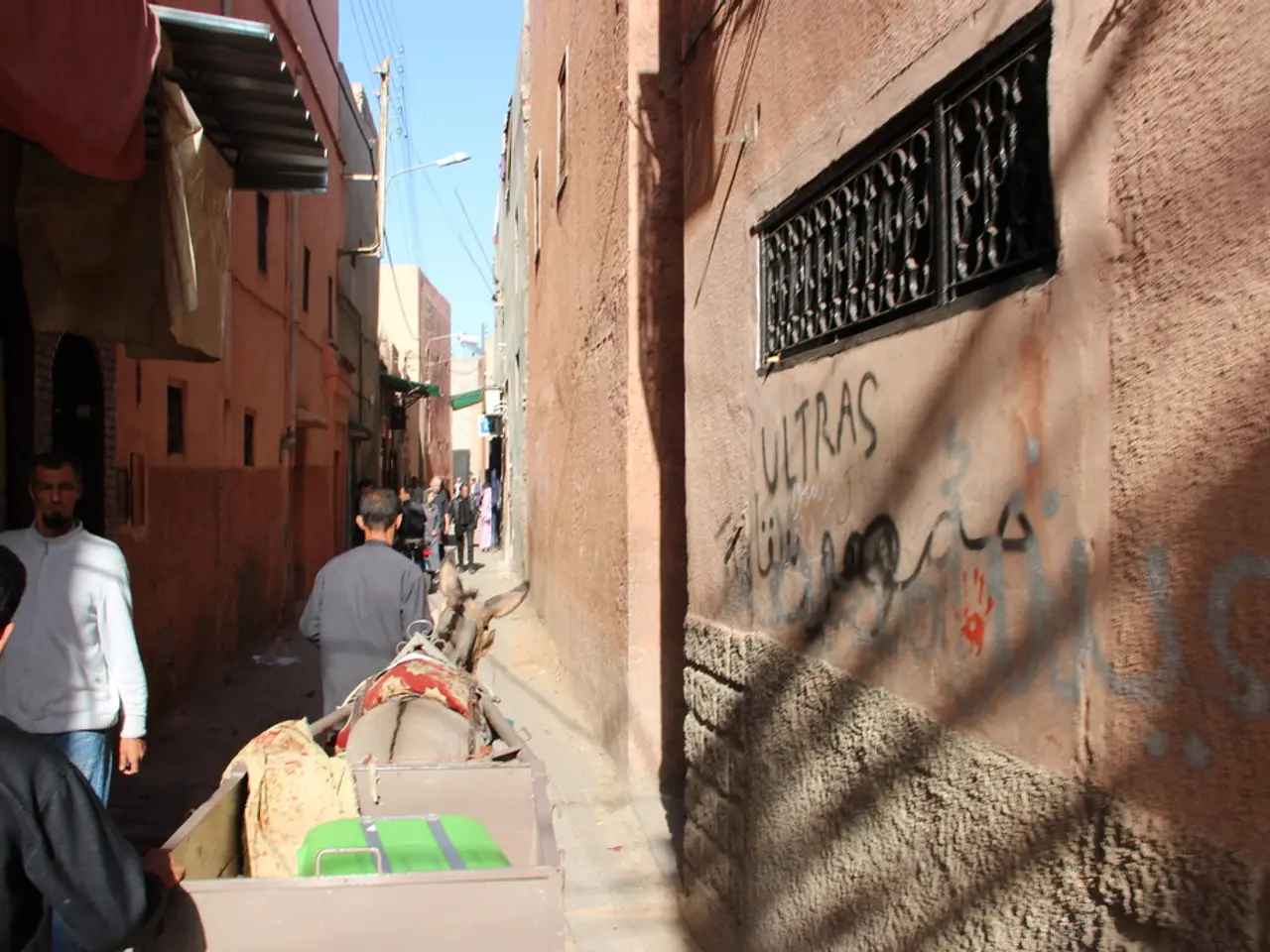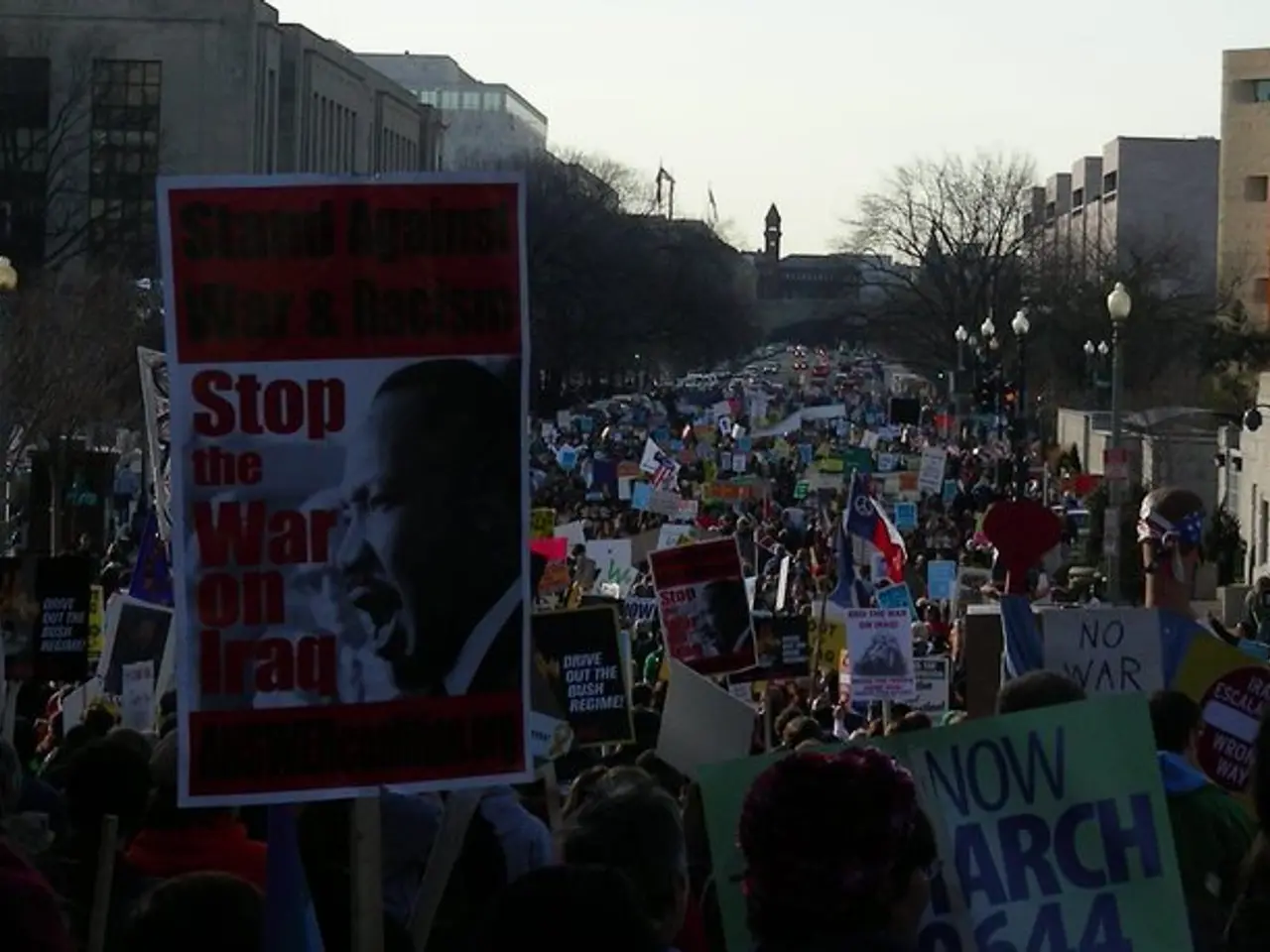Aid intended for Gaza's most vulnerable fails to reach them, leaving hunger to persist
In the embattled Gaza Strip, a humanitarian crisis is unfolding as desperate crowds rush towards food convoys or aid drop sites, seeking essential supplies. However, the aid delivery process is fraught with challenges, including widespread looting of aid trucks by armed Palestinian groups, violence along aid convoy routes, and insecurity due to ongoing conflict and military attacks.
According to a humanitarian worker in Gaza, none of this can happen without the tacit approval of the Israeli army. The Israeli authorities have acknowledged arming Palestinian gangs opposed to Hamas, without directly naming the one led by Abu Shabab. The leader of the Popular Forces, operating in the Rafah area, is accused of leading a criminal gang that loots aid trucks.
The UN reported that since May 2025, 88 percent of aid trucks destined for Gaza have been looted along the routes, obstructing equitable aid delivery and causing hoarding by armed groups like Hamas. This looting and hoarding have led to catastrophic consequences, causing widespread famine and acute food insecurity throughout Gaza. Over one-third of the population is going without food for days, with at least half a million expected to face catastrophic food insecurity by September 2025.
Hospitals are overwhelmed, treating thousands of children with acute malnutrition and recording hunger-related child deaths. The violence and insecurity prevent vulnerable groups such as children and the disabled from accessing aid, increasing civilian suffering and mortality.
The Israeli army denies targeting but fires "warning shots" when people approach too close to its positions. The Gaza Humanitarian Foundation (GHF) has become the main aid distributor in Gaza, sidelining UN agencies. World Food Programme (WFP) drivers have been instructed to stop before their intended destination and let people help themselves to avoid disturbances.
International organizations have condemned the restrictions imposed by the Israeli authorities on aid distribution in Gaza. UN agencies and humanitarian organizations have repeatedly called on Israeli authorities to facilitate and protect aid convoys and storage sites in Gaza. The Israeli army is accused of equipping Palestinian criminal networks in its fight against Hamas and allowing them to plunder aid.
Efforts like airdrops are largely symbolic and inefficient without open border crossings and ceasefires to enable safe, large-scale aid delivery. Nearly 1,400 Palestinians have been killed in the Gaza Strip while waiting for aid since May, the majority by the Israeli army. The aid is delivered on a scale deemed insufficient by international organizations, and it is often looted by gangs and resold at exorbitant prices, creating a dangerous system where children are sent to risk their lives for aid.
Michael Milshtein, head of the Palestinian Studies Forum at the Moshe Dayan Centre of Tel Aviv University, stated that many members of the Popular Forces are implicated in "all kinds of criminal activities, drug smuggling, and things like that". The causes of aid distribution issues in Gaza are complex, but the consequences are clear: massive starvation, malnutrition, civilian deaths, and a failure to reach vulnerable populations with essential aid.
- Despite the efforts of international organizations to deliver food aid to Gaza, criminal gangs like the one led by the Popular Forces' leader in Rafah area have been looting and hoarding aid trucks, causing widespread famine and acute food insecurity.
- The Israeli army's arming of Palestinian gangs opposed to Hamas and allowing them to plunder aid has contributed to the political complexities and general-news headlines surrounding food and aid distribution in Gaza, making it challenging for essential supplies to reach the desperate population.






